The Economics and Statistics Division maintains archives of previous publications for accountability purposes, but makes no updates to keep these documents current with the latest data revisions from Statistics Canada. As a result, information in older documents may not be accurate. Please exercise caution when referring to older documents. For the latest information and historical data, please contact the individual listed to the right.
<--- Return to Archive
For additional information relating to this article, please contact:
May 05, 2021NATURAL RESOURCES EMPLOYMENT, 2019 Statistics Canada has released the human resources (employment and wage) module from the 2019 Natural Resources Satellite Account. The natural resource sector includes:
- energy (oil and gas extraction, coal mining, pipelines, refineries, electricity, natural gas distribution)
- minerals and mining (ore, stone, diamond, potash, non-metallic minerals and products, cement and concrete products, aluminium production)
- forest (logging, sawmills, pulp, paper)
- fishing, hunting, water (including water and sewage systems, but not seafood processing and preparation)
- downstream forestry (converted paper, furniture, other wood products)
- downstream mining (steel mills, foundries, forging, fabricated metal products)
In 2019, there were 15,074 Nova Scotians who worked in the natural resources industries. Fishing (including hunting and water) had the largest number of employees, followed by forestry and minerals/mining. Over the last 10 years, there were notable declines for employment in forestry (when paper mills closed) and energy (with the end of natural gas exploration and production). Mining and mineral employment has been rising in recent years while fishing employment peaked in 2016 and has declined since then.
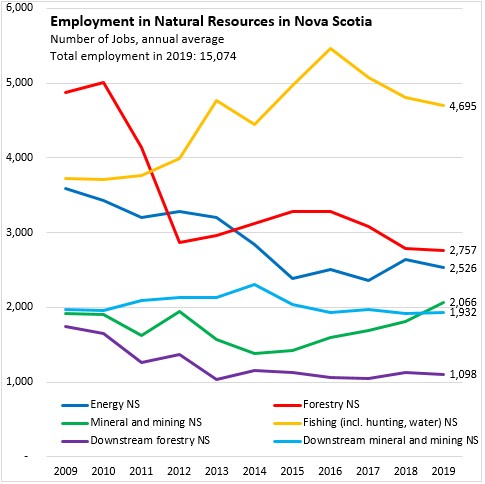
In 2019, men accounted for the bulk of natural resource employment in Nova Scotia. Those with high school or lower educations were the largest group of natural resource employees while those with university education were the lowest number of natural resource employees. Employment by age cohort was generally consistent with each age cohort's share of the population with the exceptions of those aged 15-24 (disproportionately low employment in natural resources) and those aged 55-64 (disproportionately high employment in natural resources).
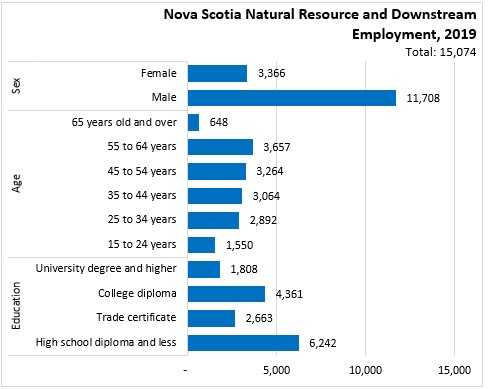
Average annual wages and salaries were $70,917 in natural resource industries in Nova Scotia. Wages were higher in energy, minerals/mining and fishing/hunting/water.

Nova Scotia natural resource wages were generally lower than industry averages - though not in energy and fishing/hunting/water.
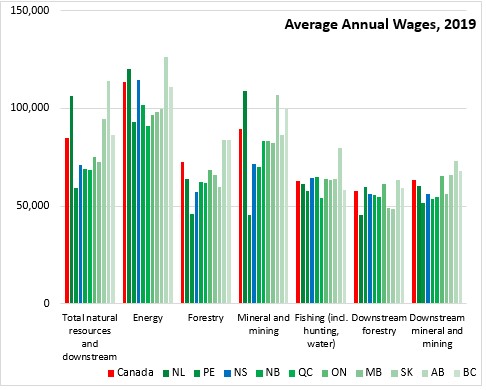
Natural resources and downstream industries accounted for 3.3% of Nova Scotia's employment in 2019. Only Prince Edward Island had lower natural resource share of employment. The national average share of natural resource and downstream employment was 5.0%, with higher shares in Alberta, Saskatchewan, New Brunswick and Newfoundland and Labrador.
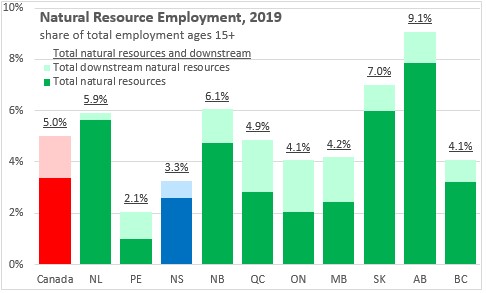
Energy industry employment was notably higher in Alberta, Saskatchewan, Newfoundland and Labrador and New Brunswick. Energy accounted for 0.5% of Nova Scotia's employment in 2019.
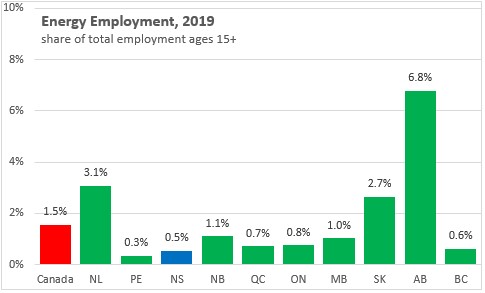
Forestry (including downstream industries) accounted for 0.8% of Nova Scotia's employment in 2019. Across Canada, forestry and downstream industries accounted for 1.1% of employment with higher shares in New Brunswick, British Columbia and Quebec. Forestry employment was a lower share of total employment in Prince Edward Island, Newfoundland and Labrador and Saskatchewan.

Mining and downstream industries accounted for 0.9% of Nova Scotia employment - second lowest for this industry across Canada (after Prince Edward Island). National mining and downstream employment was 2.2% of employment with higher shares in Saskatchewan, Ontario and Quebec.
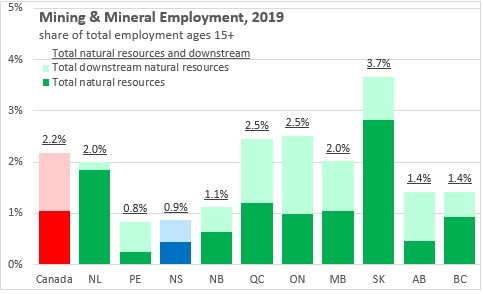
Fishing, hunting and water industries accounted for 1.0% of Nova Scotia employment - the highest portion in the country (and highest among Nova Scotia's resource industries). Nationally, these industries were 0.1% of employment and were generally concentrated in Atlantic Canada.
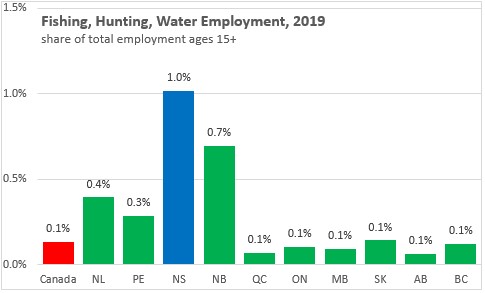
Source: Statistics Canada. Table 36-10-0653-01 Employment in the natural resources sector by demographic characteristic; Table 14-10-0327-01 Labour force characteristics by sex and detailed age group, annual
<--- Return to Archive